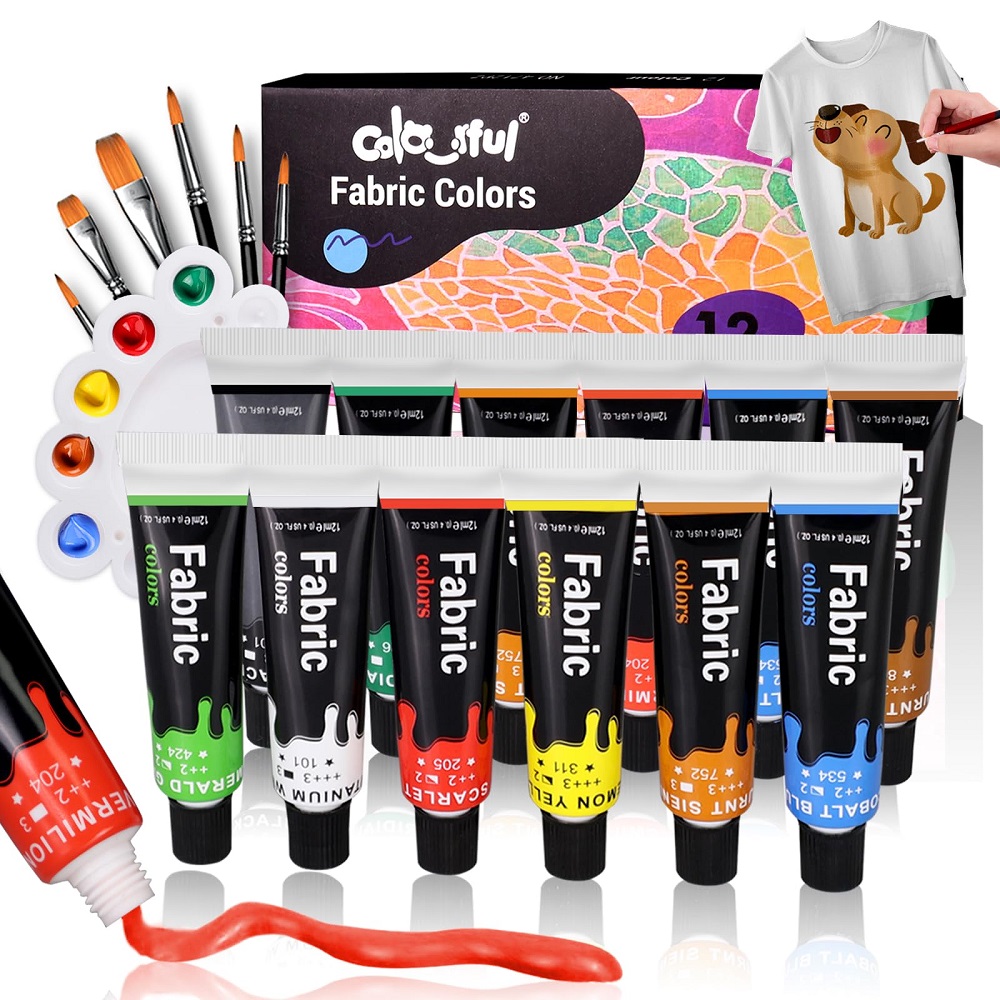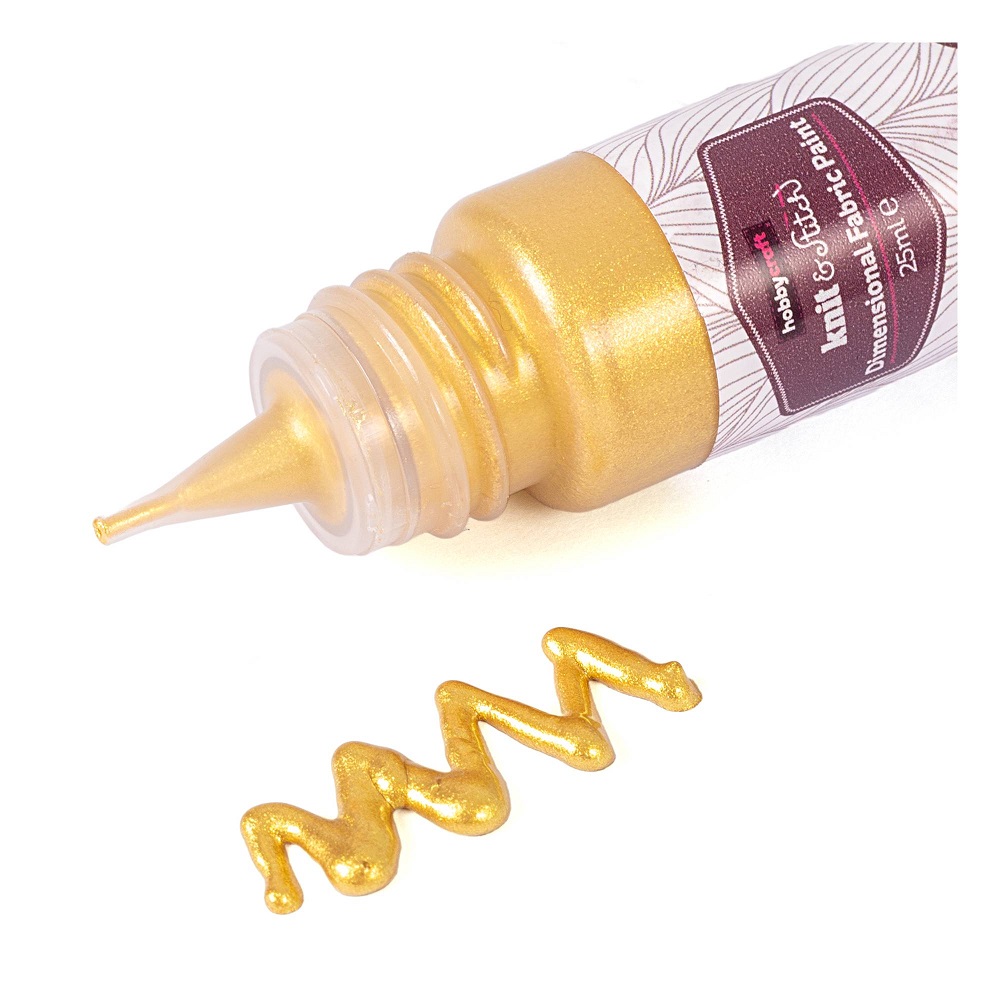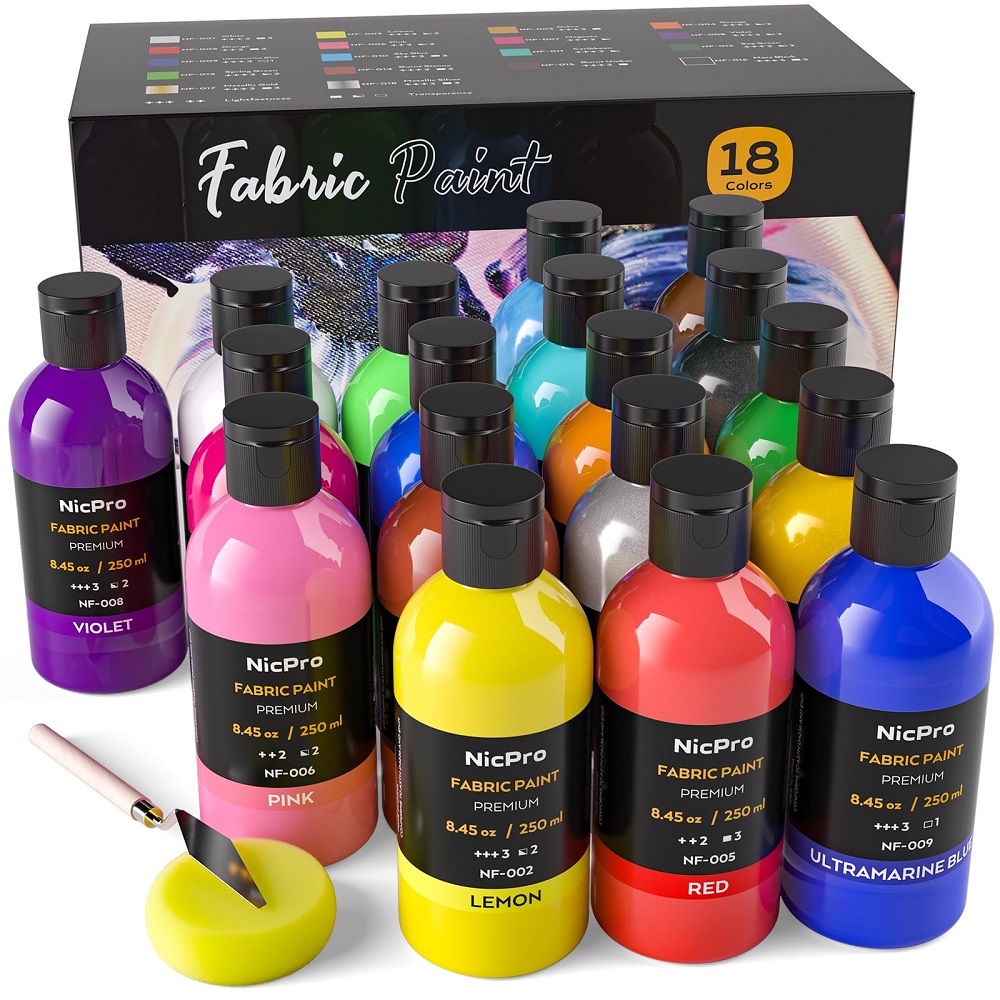Fabric paint can be a fun and creative way to add color and personality to your clothing, accessories, or home décor items. However, accidents happen, and you may find yourself in a situation where you need to remove fabric paint from a surface. Whether you’ve spilled paint on your favorite shirt or are trying to restore a fabric item to its original state, it’s essential to know the best techniques for fabric paint removal. In this guide, we will walk you through effective methods, tips, and techniques for removing fabric paint without damaging your fabrics.
Understanding Fabric Paint
What Is Fabric Paint?
Fabric paint is a special type of paint designed to adhere to textiles and maintain its vibrancy after washing. Unlike regular paint, fabric paint is formulated to be flexible, durable, and washable, which makes it a popular choice for DIY projects. Fabric paint is available in a variety of finishes, including matte, glossy, glitter, and metallic, and it can be applied with brushes, sponges, or spray bottles.
Why Fabric Paint Can Be Difficult to Remove
One of the challenges of removing fabric paint is its ability to bond tightly to fibers in fabric. Once the paint dries, it can form a long-lasting coating that resists simple cleaning methods. Some types of fabric paint, especially those designed for permanent applications, are resistant to fading and washing, making removal tricky. Additionally, if fabric paint is not addressed quickly after the spill or accident, it can set into the fabric, making it harder to remove.
Understanding these challenges will help you choose the right removal methods and prepare yourself for a bit of effort, but with the right techniques, you can restore your fabrics to their original condition.

Immediate Action: How to Tackle Fresh Fabric Paint Spills
Act Quickly to Prevent Staining
When fabric paint is still wet, your chances of successfully removing it are significantly higher. The sooner you act, the easier it will be to clean up the spill. Begin by blotting the paint with a clean cloth or paper towel. Be sure not to rub the fabric, as this can push the paint deeper into the fibers and cause it to set.
Using Water to Dilute the Paint
For fresh spills, running cold water over the fabric can help dilute the paint before it fully dries. Hold the fabric under a tap or pour water over the stained area, gently dabbing the fabric with a clean cloth to lift as much paint as possible. In some cases, simply rinsing the fabric with water may be enough to remove the bulk of the paint. However, if the stain persists, you can move on to more advanced methods.
Soap and Water Solution for Fresh Paint
A mild soap, such as dish soap or laundry detergent, can help break down the paint. Mix a small amount of soap with lukewarm water and gently blot the stained area. You can use a soft-bristled brush or an old toothbrush to work the soap into the fabric, being careful not to damage the fibers. After a few minutes, rinse the fabric thoroughly with water to remove any remaining paint residue.
Removing Dried Fabric Paint: Effective Techniques
Pre-Treating Dried Paint with a Solvent
If the fabric paint has already dried, you will need a more powerful solution. Fabric paint solvents are available in most craft stores, and these products are designed to break down the paint without damaging the fabric. Always check the manufacturer’s instructions and test the solvent on an inconspicuous area of the fabric before applying it to the entire stain.
Alternatively, you can use household solvents like rubbing alcohol or acetone. Dab the solvent onto the dried paint using a clean cloth or cotton ball, and let it sit for several minutes. The solvent will begin to break down the paint, making it easier to remove. Be sure to avoid applying excessive amounts of solvent, as this can damage delicate fabrics.
Scraping Off Dried Paint
Once the paint has softened, use a dull knife, spoon, or plastic scraper to gently lift the paint off the fabric. Work from the edges of the stain inward to avoid pushing the paint deeper into the fibers. Take your time and be gentle, as scrubbing or scraping too hard can cause the fabric to tear. If there’s any remaining paint, continue applying your solvent and scraping until the fabric is clean.
Using Baking Soda and Vinegar for Stubborn Paint
Baking soda and vinegar are natural cleaning agents that can be very effective for removing fabric paint. Once you’ve scraped off the majority of the paint, mix a paste of baking soda and water, then apply it directly to the stain. The abrasive texture of the baking soda will help lift any residual paint, while the vinegar’s acidity will help dissolve it. Let the paste sit on the fabric for 15-20 minutes before gently scrubbing it off with a brush.

Removing Fabric Paint with Household Items
Dish Soap and Baking Soda Method
Dish soap is excellent for breaking down oils and pigments found in fabric paints. To create a powerful cleaning solution, mix a tablespoon of dish soap with a tablespoon of baking soda. Apply the mixture to the stained area and gently scrub with a soft cloth or toothbrush. The baking soda acts as a mild abrasive, helping to lift the paint without damaging the fabric.
Rubbing Alcohol and Water Solution
Rubbing alcohol is another versatile product that can help break down and dissolve dried fabric paint. To use rubbing alcohol, mix it with an equal amount of water and apply it to the stained area. Allow the solution to sit for a few minutes, then blot the area with a clean cloth to lift the paint. For tough stains, you can gently scrub with a toothbrush or soft brush to loosen any remaining paint.
Using Toothpaste to Scrub Paint Away
Toothpaste, particularly the non-gel variety, is another household item that can be used to remove fabric paint. Its slightly abrasive texture can help lift the paint while being gentle on the fabric. Apply a small amount of toothpaste directly to the paint stain, then gently scrub the area with a toothbrush. After a few minutes, rinse the fabric with water to remove both the toothpaste and the paint residue.
Washing Fabric After Paint Removal
Machine Wash After Pre-Treatment
Once you’ve removed the majority of the fabric paint, it’s essential to wash the fabric thoroughly to remove any remaining traces of paint and cleaning solution. Depending on the fabric type, you can machine wash the item with a regular laundry detergent in cold or warm water. Be sure to check the label of the fabric for any specific care instructions before washing. If the fabric can be tumble-dried, use a low heat setting to avoid shrinking or damaging the fabric.
Hand Washing for Delicate Fabrics
For delicate fabrics, like silk or wool, hand washing is recommended to avoid any damage during the cleaning process. Fill a basin with lukewarm water and add a small amount of gentle laundry detergent. Gently agitate the water to create a soapy solution, then soak the fabric for 15-20 minutes. After soaking, gently scrub the stained area with your fingers or a soft cloth. Rinse the fabric thoroughly with clean water to remove any detergent and paint residue.
Preventing Fabric Paint Stains in the Future
Using Protective Covers When Painting
To prevent fabric paint stains in the future, it’s a good idea to use protective covers or aprons when working with fabric paint. If you’re painting clothing or fabric items, lay down old towels, newspapers, or plastic sheets to protect surfaces from spills. For personal protection, wear an apron or old clothes that you don’t mind getting dirty.
Using Fabric Paint Sealants
If you’re working on a project where fabric paint is likely to remain on the surface, consider using a fabric paint sealant or protector. These products can help prevent the paint from smudging or transferring, making it easier to clean up if there’s an accidental spill. Some fabric paint sealants also help make the paint more resistant to washing and fading, ensuring that your artwork stays vibrant for longer.

Teaching Kids How to Handle Fabric Paint
If you’re introducing fabric paint to children or young crafters, it’s important to teach them how to handle it safely. Encourage them to work on surfaces that can easily be cleaned and to wear old clothes or aprons. It’s also a good idea to supervise them during the painting process to minimize spills and mishaps.
Conclusion: Removing Fabric Paint Doesn’t Have to Be a Nightmare
While removing fabric paint can seem daunting, it’s entirely possible with the right methods and a little patience. Whether you’re dealing with fresh spills or dried paint, there are plenty of effective techniques to try. From using household products like rubbing alcohol, dish soap, and baking soda to opting for commercial fabric paint removers, you have several options at your disposal. The key is to act quickly with fresh spills and be gentle when dealing with dried paint to preserve the integrity of your fabric. With these tips and techniques, you’ll be able to keep your fabrics looking clean and vibrant—free from unwanted paint stains.









